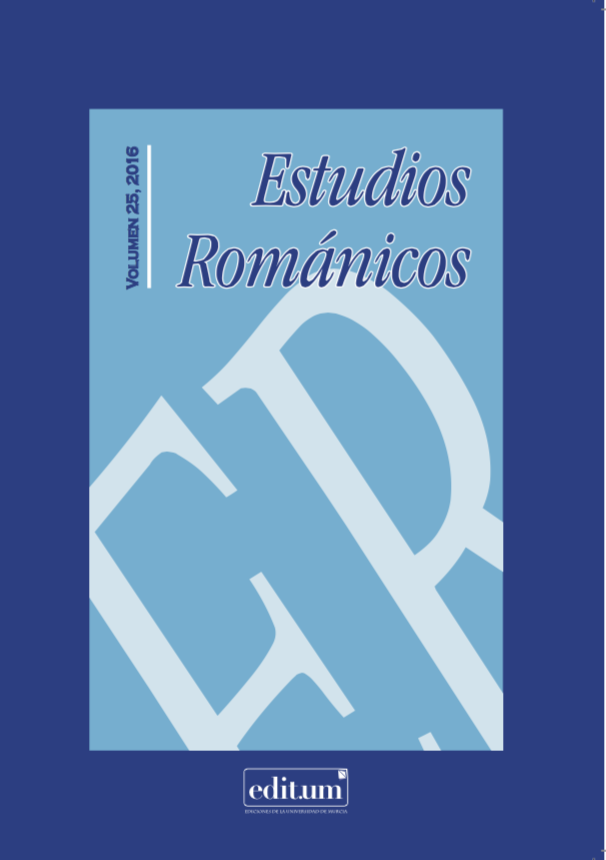Le Meneur de louves : a rewriting of Historia Francorum
Abstract
Rachilde, a prolific French author writing during the last decades of the 19th century and the first decades of the 20th century, published Le Meneur de louves in 1905. Although it was considered a historical novel by critics, its plot is a reworking of books nine to twenty of Volume 2 of the French translation (Histoire ecclésiastique des Francs) of the Historia Francorum by Gregory of Tours. Reworking of earlier texts is a technique frequently used by Rachilde, and in this novel this technique is very evident as a result of the constant presence of the hypotext in the hypertext. Rachilde is also regarded as a Decadent writer, and despite preserving some of the features of the source text, she adapts the plot by incorporating characteristics of the Decadence movement of the late 19th century.
Downloads
-
Abstract347
-
PDF (Español (España))245
-
PDF245
References
ANGENOT, Marc (1986): Le cru et le faisandé. Sexe, discours social et littérature à la Belle Époque. Bruxelles : Éditions Labor.
AMALVI, Christian (2006): «Légendes scolaires du Môyen Âge au XIXème siècle», Glaude P., S. Bernard-Griffiths y B. Vibert (dir.). La fabrique du Moyen Age. Représentations de Moyen Age dans la culture et la littérature françaises du XIXème siècle, París: Champion, pp 57-69.
BAJU, Anatole (1887): L’école décadente. París: Léon Vanier, Éditeur des Décadents.
BEZZOLA R, R (1940): «Guillaume IX et les origines de l’amour courtois». Romania, Tomo LXVI, pp. 145-237.
DE TOURS, Grégoire (1859): Histoire ecclésiastique des Francs, Tomo I. Traducción de Henri Bordier. París: Librairie de Firmin Didot Frères, Fils et Cie. Disponible en http://gallica.bnf.fr/ark:/12148/bpt6k6527967d.r=henri%20bordier [Consultado el 7/07/2016]
DE TOURS, Grégoire (1861) Histoire ecclésiastique des Francs, Tomo II. Traducción de Henri Bor- dier. París: Librairie de Firmin Didot Frères, Fils et Cie. Disponible en http:// gallica.bnf.fr/ark:/12148/bpt6k29434z.r=henri%20bordier [Consultado el 7/07/2016].
DE TOURS, Grégoire (1885): Gregorii episcopi Turonensis historia Francorum, Arndt W. y Br. Krusch (eds). Monumenta Germaniae Historica, Scriptores rerum Merovingicarum, I. Gregorii Turonensis Historia Francorum. Hannover: Hahn.
DUMÉZIL, Bruno (2008): La reine Brunehaut. París: Fayard.
GAUBERT, Ernest (1907): Rachilde. París: Bibliothèque Internationale d’édition E.Sansot et Cie.
GENETTE, Gérard (1982): Palimpsestes. La littérature au second degré. París: Éditions
du Seuil.
LE CHAPELAIN, André (1974): Traité de l’amour courtois. Traduction, Introduction
et Notes par Claude Buridant. París: Klincksieck.
MITRE FERNÁNDEZ, Emilio (2009): Una primera Europa. Romanos, crisitianos y germanos (400-1000). Madrid: Ediciones Encuentro.
PIERROT, Jean (2007): L’Imaginaire décadent (1880-1900), Rouen: Publications des Universités de Rouen et du Havre [1977].
RACHILDE (1896): La Princesse des ténèbres. París: Calmann Lévy.
RACHILDE (1904): Le Dessous. París: Mercure de France.
RACHILDE (1905): Le Meneur de louves. París: Société du Mercure de France.
RACHILDE (1923): Le Château des deux amants. París: Flammarion.
RACHILDE (1977): Monsieur Vénus. París: Flammarion [1884].
ROUGEMONT, Denis de (1972): L’amour et l’Occident. París: Librairie Plon. STARO
Las obras que se publican en esta revista están sujetas a los siguientes términos:
1. El Servicio de Publicaciones de la Universidad de Murcia (la editorial) conserva los derechos patrimoniales (copyright) de las obras publicadas, y favorece y permite la reutilización de las mismas bajo la licencia de uso indicada en el punto 2.
2. Las obras se publican en la edición electrónica de la revista bajo una licencia Creative Commons Reconocimiento-NoComercial-SinObraDerivada 3.0 España (texto legal). Se pueden copiar, usar, difundir, transmitir y exponer públicamente, siempre que: i) se cite la autoría y la fuente original de su publicación (revista, editorial y URL de la obra); ii) no se usen para fines comerciales; iii) se mencione la existencia y especificaciones de esta licencia de uso.
3. Condiciones de auto-archivo. Se permite y se anima a los autores a difundir electrónicamente las versiones pre-print (versión antes de ser evaluada) y/o post-print (versión evaluada y aceptada para su publicación) de sus obras antes de su publicación, ya que favorece su circulación y difusión más temprana y con ello un posible aumento en su citación y alcance entre la comunidad académica. Color RoMEO: verde.












